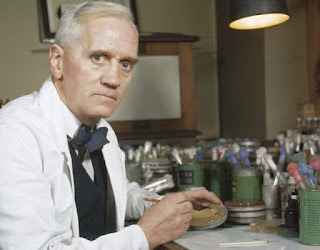Dear students...
This post discuss about antipyretics and anesthetics.
Antipyretics:
Aspirin:
Therapeutic uses:
 |
| Fever |
 |
| Head ache |
 |
| Inflamation |
Paracetamol:
Therapeutic Uses:
 |
| Joint and muscle pain |
Ibuprofen (Brufen):
Dear students...
This post discuss about antipyretics and anesthetics.
 |
| Fever |
 |
| Head ache |
 |
| Inflamation |
 |
| Joint and muscle pain |
Dear students,
Here we are going to see about the next two antibiotics.
 |
| Streptomycin is a amino cyclitol glycoside that consists of streptidine having a disaccharyl moiety attached at the 4-position. |
Hi....
This post deals with some drugs and their therapeutic applications
What are drugs?
Today, medicines come from a variety of sources. Many were developed from substances found in nature, and even today many are extracted from plants. Some medicines are made in labs by mixing together a number of chemicals. Medicines can be delivered in many ways, such as:
Antibiotics are medicines that are used to treat as well as prevent bacterial infections. They inhibit growth and sometimes destroy the microorganisms that cause infections.
Antibiotics use is encouraged because it is fairly harmless to human beings and animals. There are two main ways in which antibiotics target bacteria. They either prevent the reproduction of bacteria, or they kill the bacteria, for example by stopping the mechanism responsible for building their cell walls.
 |
| Antibiotics |
Some common examples of antibiotics are as follows:
PENICILLIN
STREPTOMYCIN
CHLORAMPHENICOL
First we are going to see about Penicillin. It is a group of antibiotics (medications used to treat bacterial infections) that work in a specific way to destroy bacteria in your body. Types of penicillin and drugs closely related to them are called “penicillins.” They’re a subclass of beta-lactam antibiotics. Penicillin antibiotics come in oral form (pills or liquid you swallow) and IV form (liquid that a provider injects directly into your vein).
Penicillin works by attaching to the wall of bacteria cells. It damages the cell wall and eventually destroys the bacteria.
 |
| Sir Alexander Fleming a Scottish physician and microbiologist discovered penicillin in 1928 |

Pneumonia is inflammation and fluid in your lungs caused by a bacterial, viral or fungal infection. It makes it difficult to breathe and can cause a fever and cough with yellow, green or bloody mucus.
 |
| Meningitis is an inflammation of the protective layers surrounding your brain and spinal cord (meninges). |

 Diphtheria - a serious bacterial infection that usually affects the mucous membranes of the nose and throat.
Diphtheria - a serious bacterial infection that usually affects the mucous membranes of the nose and throat.
Diphtheria is a highly contagious, infectious disease caused by a bacterium called Corynebacterium diphtheriae. People with diphtheria have serious breathing and swallowing problems, and they may develop sores on their skin.
.jpg)
Tetanus - Tetanus is a serious disease of the nervous system caused by a toxin-producing bacterium. The disease causes muscle contractions, particularly of your jaw and neck muscles. Tetanus is commonly known as lockjaw. There's no cure for tetanus. Treatment focuses on managing symptoms and complications until the effects of the tetanus toxin resolve.
Hello....
Dear students...
In this post I have shared video link about various methods of polymerization. Hope this will be useful to you. You can also view the study materials form the link given at the end.
Polymerization reaction may take place in any of the three states of matter- solid, liquid, gas. The solid state reactions are usually slow, they are not considered practical for this reason. The gas-phase reactions do take place but normally they require maintenance of high temperatures, a condition in which almost all high molecular weight polymers become unstable. Hence almost all commercial process of polymerization are liquid phase reactions.
LIQUID-PHASE REACTIONS:
→ Homogenous type
Bulk Polymerization
Solution Polymerization
→Heterogeneous type
Emulsion Polymerization
Suspension Polymerization/Pearl/Bead Polymerization
The homogenous or heterogeneous terms refers only to initial conditions of the system and are not to the subsequent conditions
Methods of polymerization: Video Part 1
CORROSION Corrosion is one of the most common phenomena that we observe in our daily lives. You must have noticed that some objects made...
